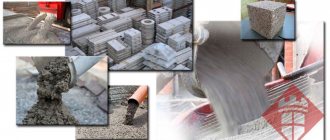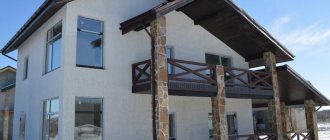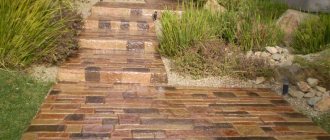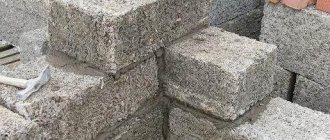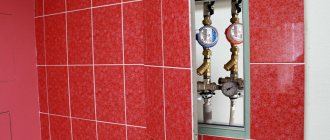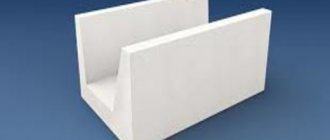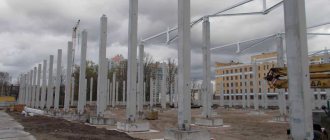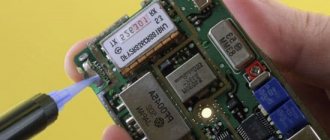Characteristics
Polymer concrete is resistant to moisture and mechanical factors. It reacts normally to temperature changes. The composition hardens quickly, adhering well to any base. The material is elastic and breathable. It does not react with chemical agents.
The main characteristic of the polymer-cement mixture is environmental safety.
Polymer concrete does not emit substances that negatively affect human health and the environment. The mixture can be used in the construction of public catering facilities.
Polymer concrete: characteristics
Due to the huge number of its positive properties, the cement-polymer mixture justifiably deserves respect among builders. Using this material, any specialist will appreciate its strength and durability. Polymer concrete is not susceptible to moisture, does not deform, and responds well to temperature changes and bad weather. It hardens quickly and adheres perfectly to any surface. This material has high tensile strength and good air permeability. It is not affected by any chemical reactions.
But the most important of all the properties of polymer concrete is that it is environmentally friendly, does not pollute the environment and does not harm human health in any way. The polymer mixture is allowed to be used even in the construction of catering establishments, various food retail outlets, as well as other food industry buildings.
Return to contents
Composition of polymer concrete
The composition of the building mixture includes the following components:
- Coarse filler. Broken glass, crushed stone, and sand are used as this element.
- Fine filler. The introduction of such a component reduces the cost of the product. The filler is graphite or quartz.
- Connecting link. A polymer resin, such as polyester, furan, urea-formaldehyde or epoxy, is added to the mixture. Polymer concrete contains 5% binder.
- Auxiliary additives. These include substances that increase elasticity and frost resistance, giving the composition the desired color.
Polymer concrete
It has nothing in common with our usual Portland cement. It is formed by combining stones with a polymer binder that does not contain water. Polystyrene, acrylic and epoxy resins are the monomers that are widely used in making this type of concrete. Sulfur is also considered as a polymer. Sulfur concrete is used for buildings that require high resistance to acidic environments. Thermoplastic polymers, but most commonly thermoset resins, are used as the main polymer component due to their high thermal stability and resistance to a wide range of chemicals.
Polymer concrete consists of aggregates that include silica, quartz, granite, limestone and other high-quality materials. The unit must be of good quality, free from dust, debris and excess moisture. Failure to meet these criteria may reduce the bond strength between the polymer binder and the aggregate.
Production technology
In the production of building materials, 2 technologies are used:
- Periodic. In this case, the container is cleaned after each cycle of material production. Polymer concrete can be produced using a concrete mixer or a simple basin.
- Continuous. The technology is used by large enterprises. The conveyor includes injection molding units, dispensers and automatic mixers.
In the manufacture of polymer concrete products, molds treated with a release agent are used. The composition makes it easy to extract the finished product. The mold is made from silicone, wooden boards, fiberglass or metal.
The manufacturing process includes the following steps:
- Preparation. The mold is treated with a release agent and covered with gelcoat of the required color range.
- Creation of the composition. Fillers and polymer additives for concrete are thoroughly mixed using a mixer.
- Laying the mixture into molds. At large enterprises, concrete pavers are used at this stage. When making products in a small workshop, the action is performed manually.
- Vibration compaction. Vibration is used to impart the desired properties to the mixture. The duration of this stage is 2 minutes. Factories use a resonant vibration platform. Small enterprises are supplied with vibrating tables.
In industrial conditions, polymer concrete products are subjected to heat treatment. This reduces the drying time of the product. In other cases, hardening occurs under natural conditions.
Advantages of the material
Polyconcrete has a number of positive qualities that make it possible to use the material when classic concrete does not provide the desired result.
Thanks to the smooth surface, it is easy to remove dirt.
The advantages of the composite composition include the following characteristics:
- Resistant to high humidity. Drops of water quickly evaporate from the surface without having time to be absorbed.
- Insensitive to temperature changes. Products do not deform when rapidly heated or cooled. The quality of the material does not depend on the number of freezing cycles. In the production of concrete mixtures, polymer is used instead of traditional cement or silicate.
- Resistance to aggressive substances. The coating is not damaged by disinfectants and solvents. This allows you to avoid using additional surface treatment methods.
- Possibility of restoration of damaged areas. The composite mass is restored using special mixtures.
- Increased strength. With a low weight, this characteristic is not inferior to that of classic concrete.
- Surface smoothness. No unevenness is formed during the manufacture of products. The material does not slip and does not wear off. This avoids contamination of the coating. If necessary, the surface is washed using the usual methods.
- Recyclable. The material is used in the creation of technological waste. This reduces the cost of the product produced using waste-free technology.
Features and scope of use
Polymer concrete is used for the manufacture of the following products:
- Countertops. Kitchen elements made from this material are characterized by increased strength, hygiene and a long service life. They fit well into any interior. Countertops made of polymer concrete do not differ from products made from natural stone.
- Floors. Floor coverings are resistant to stains and easy to install. The surface is plastic, resistant to mechanical damage, and has an aesthetic appearance. A layer 2 mm thick can be used for 10 years.
- Decorative parts of facades. Polymer concrete is no different from marble or granite. Polymer products are lightweight, so they can be installed without creating a massive base.
- Monuments and fences. The polymer array is resistant to atmospheric factors, which allows it to be used for decorating ritual objects.
Where is polymer concrete used?
This material is used to make:
- Sexes;
Floor
- Stairs;
Ladder
- Paving and facing slabs;
Tile
- Monuments;
Monument
- Fontanov;
Fountain
- Sculptures;
Garden sculptures
- Drainage trays;
Drainage tray
- Window sill boards;
Windowsill
- Fencing;
Balustrade
- Balusters and handrails;
Balusters, railings and support columns
- Decorative products in the form of stucco;
Stucco molding
- Kaminov;
Fireplace
- Sinks for kitchens and bathrooms;
Kitchen sink
- Kitchen and other countertops;
Dining table with top
- Vazonov;
Garden flowerpots
- Garden furniture and urban landscape elements.
Bench
Specialized equipment can be made from polymer concrete, for example, it can be a frame.
Machine bed
The machine will not be inferior in strength and reliability to equipment made from other materials.
Fraser
Some products should be examined in more detail to evaluate their performance.
Kitchen countertop
Worktop with sink
Concrete countertops are especially popular, and polymer concrete occupies a leading position in this area. A tabletop made from this material is practical, reliable and durable.
Thanks to the high decorative qualities of the material, such a countertop will be appropriate in any interior, and the wide range of colors of the material will allow you to choose the desired shade to combine with finishing materials and kitchen facades.
Simple surface care will ensure its well-groomed and tidy appearance. The tabletop is highly resistant to moisture and mechanical stress, which is superior to the natural material whose surface it imitates.
In addition to the kitchen, polymer concrete can be used in other rooms with high humidity, for example, a sink or bathtub can be made.
Polymer concrete floor
Floor
Floor coverings are easy to install and easy to clean. They do not accumulate dust on their surface. Such flooring can withstand heavy loads, so they are often used for flooring in public spaces with significant traffic, in warehouses, parking lots and industrial premises.
At the same time, the price of installing such a floor is very affordable. A 2 mm coating can last up to 10 years, and the thicker it is, the longer its service life.
Elements of facade decor
Facade decor
If we compare natural stone and polymer concrete when creating facade decor, then the advantage is on the side of artificial stone, due to its low weight and external similarity to natural marble or granite.
The advantages of such products include the following:
- The products do not place a significant load on the walls and foundation of the building, and therefore do not require reinforcement of load-bearing structures;
- The material is resistant to environmental influences;
- They have a decorative appearance with a pronounced texture and a wide color spectrum;
- The products are durable and easy to install.
Application in the field of funeral services
Marbled monument
Monuments and fences made of marble and granite are high in cost and labor intensive to manufacture.
Tombstone
Making monuments from polymer concrete is much easier than from natural stones. The material, due to its plasticity, allows the production of ritual products of any shape and complexity. Monuments are durable and will not lose their decorative qualities for many years.
A clear pattern and relief is achieved thanks to the smooth, glossy surface of the material. In addition to monuments, ritual vases and fences can be made. The video in this article will tell you how to make products correctly.
Types of polymer systems
The term polymer concrete refers to a wide group of building mixtures that differ in composition and production methods.
Plastic concrete group
Plastic concrete is a mixture based on artificial resins. Cement is not used in its manufacture.
Plastic concrete is used in the production of finishing materials.
There are 2 types of material:
- Filled. The amount of binder component is 20-50%. Resin fills the space between the filler and the aggregate.
- Frame. It has a porous structure. The polymer is used to hold the core frame together. The volume of the binder component in the mixture does not exceed 6%.
The properties of the material are determined by the type of fillers, polymers, and auxiliary additives introduced. Furfural acetone mixtures should not be used for finishing premises. Epoxy and methacrylate compounds are safe for humans and animals.
Compared to classic concrete, plasty concrete has higher levels of moisture resistance, frost resistance and elasticity. The disadvantage is that it wears out quickly.
Polymer cement systems
The composition of such materials includes cement.
Polymer cement floors.
The mixture is prepared in 3 ways:
- Mixing the base with aqueous solutions of polymers - polyvinyl acetate or artificial rubber.
- Introduction of a dispersion of polymers or monomers. The most commonly used are furan alcohol and epoxy resins.
- Impregnation of concrete. Polymer components, such as urea or styrene, are introduced to the required depth.
The recommended volume of the binder component is 15-20%. This allows you to maintain the structure of the cement composition. As the polymer content increases, products lose strength. Sand or fine crushed stone is used as filler. Polymer-cement mixtures are used to create wear-resistant floor coverings.
Concrete-polymer compositions
Concrete polymer is a hardened cement mixture, onto the surface of which liquid impregnation is applied. The material contains metal acrylate resins and catalysts, which harden in the structure of the mineral framework.
The disadvantage is the presence of a large number of pores that appear during the production stage of products.
Such defects reduce strength and resistance to aggressive substances. Filling the pores with polymer helps improve the performance of the composition.
Column made of polymer concrete.
Geoconcrete
In construction, materials are increasingly being used that use natural components in their production. Geopolymer concrete is similar to classic concrete, but the performance characteristics are slightly different. The structure resembles that of natural stone.
Low cost makes the material in demand among individual developers. Geoconcrete is used for the construction of multi-story buildings and the creation of decorative elements.
Areas of use
Polymer concrete, or artificial stone, allows you to produce products with complex profiles with minimal time and labor costs. It is more technologically advanced compared to natural stone.
With the right recipe, the products are strong and durable . Chips and cracks in polymer concrete can be easily and imperceptibly covered with the same composition.
Artificial stone still has one big drawback - it is poor weather resistance; polystyrene is destroyed in sunlight.
Types of products made from cast polymer concrete:
- countertops, window sills, boards, etc.;
- sanitary products (sinks, sinks, bathtubs);
- decorations for external and internal decoration of premises (bas-reliefs, stucco molding);
- elements of garden decor (pots, flower beds, benches).
DIY cement-polymer concrete
The process of making polymer concrete with your own hands includes the following steps:
- Preparation of components. The crushed stone is cleaned of foreign matter and washed. The sand is passed through a sieve. The moisture content of the fraction should be no more than 1%. Therefore, the sand is thoroughly dried.
- Mixing. The components are placed in a concrete mixer. First of all, crushed stone is laid, then sand and aggregate. The ingredients are mixed for 2 minutes. After introducing water, the procedure is repeated.
- Preparation of the binder component. The resin is softened by adding a solvent. The finished substance is mixed with a plasticizer.
- Introduction of a binder component with a hardener and prepared concrete mixture. After introducing the hardener, the composition is stirred for 3 minutes.
The finished composition must be poured into molds immediately.

